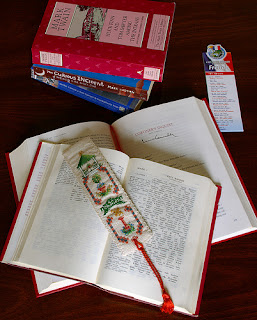How goes the bookmark, spidey says to me?
Has it keep your place, keeping it safe in the vast web-like sea?
I have found a system, though it is just for me.
For students, I'll search 'till I like what I see.
I have been using Diigo for about a year now to keep track of things on the web. For my inquiry project, I really wanted to take a look at how I might use it in the library to keep track of good sites for students doing various research projects.
Will Richardson (2010) illustrates all kinds of uses for Diigo in the classroom: setting up accounts for the class, tagging them for individual students to follow, annotating comments for them (pp. 95-96). While I can see the merit in this kind of use of Diigo, I think the students at my elementary school are not quite ready for this yet.
My investigation into Diigo Educator left me disappointed. While I was successfully able to create a class and start making bookmarks, the "social" part of the application made me nervous. While many of the "education" formats for Web 2.0 platforms are closed, Diigo seems to allow students more liberty at veering off the site and into something else. While I am definitely pushing the edges of what parents and teachers at my school are comfortable with in terms of working and creating online, I do not think this would work.
Here is a link to the Diigo page for Elementary School Safety. It is a list of resources related to safely implementing EdTech in elementary schools. Quite ironically, students can easily click on the top of the page and get sidetracked into some links that might not be great.
In this Tip of the Day - Using Diigo, J. Bauer suggests some other uses of Diigo such as:
- Have a virtual discussions about a website or article by having every student include a sticky note with their thoughts.
- Make notations beside videos to let teachers or students know what sections to watch or to explain if something is unclear.
In this video, an elementary teacher-librarian is interviewed about how she uses Diigo with her students. The collaborative way that the students use Diigo is very impressive, and learning how to tag as well as annotate their bookmarks is a very useful research skill.
While these are some other good ways of using Diigo, I think I will wait to implement them until I am at a secondary school.
Richardson, W. (2010). Blogs, wikis, podcasts and other powerful web tools for classrooms (3rd ed.). Thousand Oaks, Calif.: Corwin.
Richardson, W. (2010). Blogs, wikis, podcasts and other powerful web tools for classrooms (3rd ed.). Thousand Oaks, Calif.: Corwin.

No comments:
Post a Comment